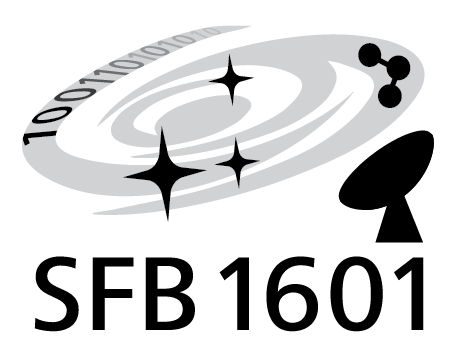Project leaders: Kramer, Michael (MPIfR); Walch-Gassner, Stefanie (PH1)

Massive stars leave their mark in various important ways. Their life and death are major contributors to the chemical enrichment of the Universe as a whole, with their explosive ends providing cosmic rays and sources of energy for the ISM. Whether supernovae are the main drivers of ISM turbulence is still heavily debated (e.g. Padoan et al., ApJ 822, 11, 2016, Seifried et al. 2018). Certainly, massive stars are essential components in the life cycle of cosmic material, intimately linked to the ISM, its properties and the formation of new stars. Supernovae leave behind compact objects, especially neutron stars, which literally are beacons of past massive star formation, and which themselves can be used to probe the ISM, its ionized component and its turbulence spectrum.
The focus of B5 will be an holistic approach to study the interaction of supernovae, their remnants and the ISM by exploiting a number of underutilised sources of information and recent new techniques. The aim is to interlink observations with simulations, comparing the details of supernova feedback calculations with detailed observational investigations of a number of suitable case studies to be identified. We will concentrate on sources that harbour active neutron stars (pulsars, magnetars) in supernova remnants (SNRs), interacting with nearby molecular clouds. Observations of the neutron star, its energetics and potentially existing bow-shocks caused by a supersonic motion of the neutron star, provide information on the resulting shocks and energy deposition. Studies of scintillation properties in case of detected radio emission simultaneously provide insight into the density structure of the important ionized ISM and its turbulence. Studying the injection of energy, we will gain a better understanding how this relates to the clustering properties of massive stars and the relevance of supernovae for the dispersal of molecular clouds, respectively for the triggering of new molecular clouds. All of these points are highly relevant in order to assess the relative impact of supernova feedback with respect to other, early stellar feedback (stellar winds, H II regions) and the post-natal impact of neutron stars. This is particularly important when trying to assess the regulation of star formation in gas-rich environments, where supernovae commonly interact with dense gas.
Publications
2025
Thermal emission from bow shocks III: Variable diffuse X-ray emission from stellar-wind bow shocks driven by dynamical instabilities Journal Article
In: Astronomy & Astrophysics, vol. 696, pp. A91, 2025.
How do supernova remnants cool?: II. Machine learning analysis of supernova remnant simulations Journal Article
In: A&A, vol. 693, pp. A38, 2025.
References
- Chatterjee, Vlemmings, Brisken, Lazio, Cordes, Goss, and 4 co-authors including, and Kramer, “Get- ting Its Kicks: A VLBA Parallax for the Hyperfast Pulsar B1508+55”, ApJ Letters 630, L61 (2005).
- Gatto, Walch, Low, Naab, Girichidis, Glover, Wünsch, Klessen, et al., “Modelling the supernova-drivenISM in different environments”, MNRAS 449, 1057 (2015).
- Haid, Walch, Naab, Seifried, Mackey, and Gatto, “Supernova blast waves in wind-blown bubbles,turbulent, and power-law ambient media”, MNRAS 460, 2962 (2016).
- Janka, Wongwathanarat, and Kramer, “Supernova Fallback as Origin of Neutron Star Spins and Spin-kick Alignment”, ApJ 926, 9 (2022).
- Lin, Main, Verbiest, Kramer, and Shaifullah, “Discovery and modelling of broad-scale plasma lensingin black-widow pulsar J2051 – 0827”, MNRAS 506, 2824 (2021).
- Main, Sanidas, Antoniadis, Bassa, Chen, Cognard, and 15 co-authors including, and Kramer, “Mea-suring interstellar delays of PSR J0613-0200 over 7 yr, using the Large European Array for Pulsars”,MNRAS 499, 1468 (2020).
- Mall, Main, Antoniadis, Bassa, Burgay, Chen, and 67 co-authors including, and Kramer, “Modellingannual scintillation arc variations in PSR J1643-1224 using the Large European Array for Pulsars”, MNRAS 511, 1104 (2022).
- Seifried, Walch, Haid, Girichidis, and Naab, “Is Molecular Cloud Turbulence Driven by External Supernova Explosions?”, ApJ 855, 81 (2018).
- Walch and Naab, “The energy and momentum input of supernova explosions in structured and ionized molecular clouds”, MNRAS 451, 2757 (2015).
- Yao, Zhu, Manchester, Coles, Li, Wang, Kramer, Stinebring, et al., “Evidence for three-dimensional spin-velocity alignment in a pulsar”, Nature Astronomy, 10.1038/s41550-021-01360-w (2021).
